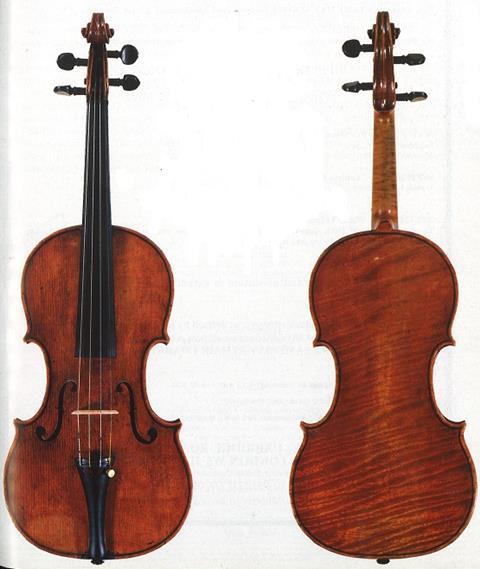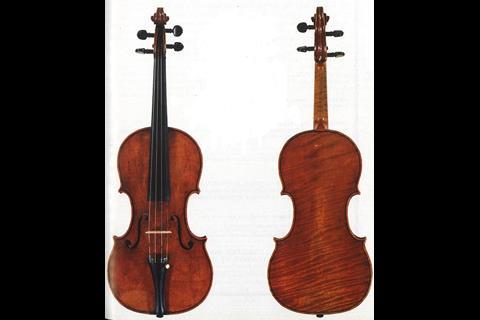
This illustration of a violin by Alessandro Gagliano was published in The Strad, May 1987. The following text is extracted from the article accompanying the photographs:
Alessandro Gagliano worked in Naples from about 1700 to 1735. He is the first recorded Neapolitan violin maker, his work is relatively rare and it is not known where he learned his trade. Only his occasional eccentricities and his obvious lack of attention to detail prevent him from ranking alongside the finest Cremonese makers.
The violin pictured here is called the 'Rotondo'. It is the finest known example of Alessandro Gagliano's work. The photographs clearly show a spectacular piece of back wood, contrasting strangely with the finely figured ribs and wild appearance of the bellow wood. The initial impression is that of a composite fiddle. However, even the briefest encounter with this violin is enough to dispel any such thoughts.
The one-piece back is of finely grown imported wood, perfectly quarter sawn, with wide slashing flames descending from right to left - the type of piece which would be highly sought-after among violin makers. The ribs, while having their own special attraction, bear no resemblance to the back wood. The flame, which runs almost vertically all around the instrument, is narrow and well defined. The head wood is very similar to that of the ribs, although it has a velvety appearance, being cut, more or less, on the slab.
The overall finish of the soundholes can at best be described as rather hasty: they balance each other only aesthetically and not at all geometrically. Despite their rough-house quality the soundholes are cut in the classical way.
What makes this violin so special is its varnish. Over a golden, strongly dicroistic ground, lies an almost unbelievably fresh, soft, rich orange-red varnish. Present in large amounts and laid on fairly thickly, the varnish quite simply lifts this violin and its maker into the ranks of the great.










































No comments yet